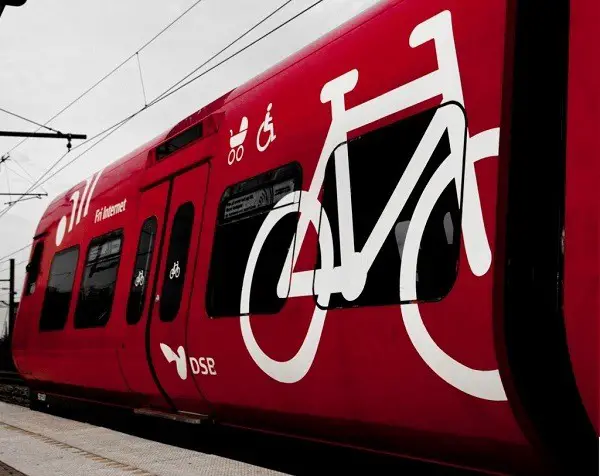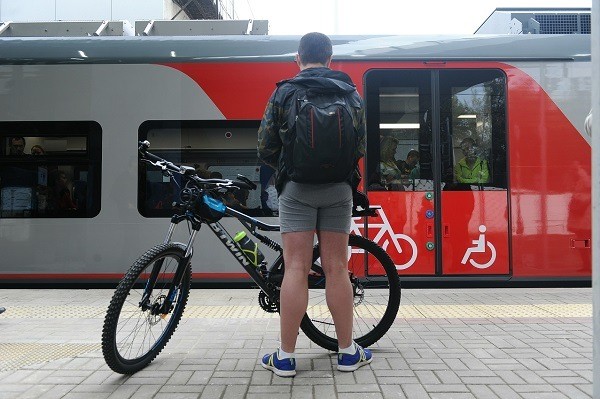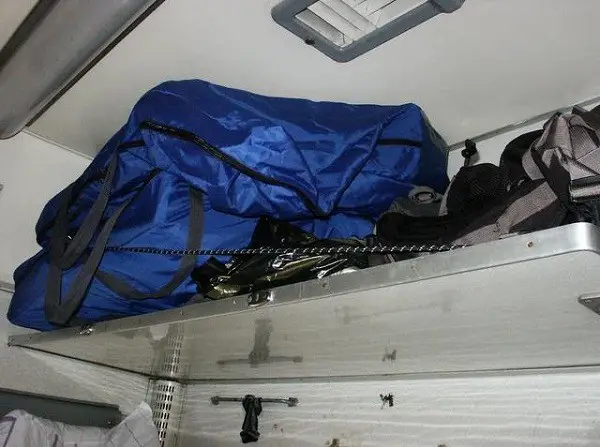The bicycle is a versatile means of transportation that is becoming more and more popular nowadays. A significant role has been played by the promotion of healthy lifestyles, as well as campaigns aimed at preserving the environment. Indeed, the bicycle makes it easy to get anywhere in the city, keeps the muscles of the body toned, and saves on fuel and maintenance of the vehicle. With the advent of spring city dwellers go to summer cottages, in the villages to grandmothers and just for hiking in a friendly company. Here and there is a need to get acquainted with the basic rules of transportation of bicycles in the train. After all, call it carry-on baggage is not possible, to buy a separate ticket – is also a dubious event. And who wants to be a trespasser and get off the train by order of the conductor? So today we will talk about how to transport a bicycle in the train RZD. Immediately designate a point: we will talk about trains, trains and other forms of rail transport.
Train or train
Before you disassemble the bike or any other way to prepare it for the journey, we must decide on the type of transport: train or train. The fact is that the first version of the bicycle can be freely transported in unassembled form. To do this, there is a vestibule where it will not interfere with other passengers and train staff. But there are pitfalls: if you need to pass just a few stops and you are traveling alone, no one will ask you for a document authorizing the transportation of a bicycle. Only if your trip coincided with the date of control inspections on the railroad, then you’re out of luck. But otherwise, no one will throw you off the train for leaning your bike gently against the wall. The main thing is that it does not interfere with passengers and does not create obstacles on the way out. It’s quite another thing when you plan to ride on the same electric train with a large and friendly group of cyclists, and you need to carry at least 3-4 bikes. Here’s where it’s worth referring to the official document, which describes in detail the rules of carrying a bike on the train.
According to them, you can carry a bike in the vestibule for a fee or free (it depends on your conscience and luck). You can also carry the bike as hand luggage, but only in a disassembled and packed form. This option is suitable if you have a long journey in the train. The cost of the ticket depends on the distance. In some rail companies there are so-called “happy hours,” when a passenger can carry a bicycle for free on the train RZD. As for the trains (especially long distance), it is not so simple, and no one will allow you to carry a bicycle for free. So first let’s deal with the preparation of the bike for the trip, and after that learn how to carry a bike on the train. It is worth noting: need a case for two-wheeled transport and camping set of tools.
Preparing
According to the rules of luggage RZD, a bicycle can be transported in disassembled form. Depending on its size and weight, it can be transported in the luggage compartment or on a suitable hand luggage shelf. In the latter case, the bike must be securely fastened to avoid the possibility of falling on other passengers. Going on a trip, you should ask in advance about the rules of transportation of bicycles on long-distance trains. Experienced cyclists recommend removing not only the front wheel, but also the left pedal. It does not make sense to touch the right one, because the bike does not take up much space. The disassembled bike is placed in a special case. It is good if it will be equipped with appropriate pockets and compartments for parts. Some models are designed to store and transport the bike completely disassembled: that is, in this case you need to remove both wheels, handlebars, trunk, saddle, and so on. This is not a bad option for those who do not know how to transport a bike on a long-distance train. If we are talking about a short-term train, the bike should be disassembled and packed in a soft case – then it can easily fit in the compartment for hand luggage.
If you are the lucky owner of an expensive and exclusive model of bike, you have to shell out for a hard case, which certainly would not fit in the compartment for hand luggage. In this case, your bike will be riding in the baggage car. These options are good for avid travelers who often have to ride trains with their two-wheeled friend. What about those who need to transport their bicycle on the train once? Not to buy an expensive case specifically for this! Of course not! But disassemble the bike will still have to, and it should be done as if you have a case. A packing can be in the most ordinary food film, wrap it so that the protruding parts do not hurt and do not stain the other passengers.
Rules of carriage
Recall that in electric trains can be carried unassembled bicycle in the vestibule, provided that it will not interfere with other passengers. As for long-distance trains, the bike must be prepared for transportation by first disassembling it. You can transport your bike in the compartment for hand luggage, in the vestibule or in the luggage compartment. Here you need to look at the circumstances. As life practice shows, sometimes the conductors do not even check the tickets for the bicycle. But to calm your conscience, it is better to buy a permit. In addition, if you have an expensive bicycle and you will carry it in the luggage compartment, then if it is damaged you can demand compensation. Especially since the cost of the ticket for the bike is not so great.
Carriage in different types of carriages
It is known that the cars in trains are divided into 3 types: general, second-class and compartment. A shared carriage, where passengers are seated, is great for carrying a bicycle. This option is good for traveling a short distance. In this case, the bike can be placed in the vestibule or placed on the top shelf. But remember that it should not interfere with other passengers, and in case of abrupt braking of the train should not fall on someone’s head.
In the second-class car it is also convenient to transport a bicycle. During an experimental group of tourists was able to find out that on the top shelves easily fit 6 bicycles in disassembled and packed form. Also, the bike can be placed across the aisle by securing it with a rope. But in this position bike can cover the lights, so first it is worth asking the consent of the conductor and passengers.
In the compartment to carry a bike most uncomfortable. First, the shelves are much smaller, and secondly, they are often occupied by linen. In addition you can transport your bicycle compactly and safely only in the shelves above the common corridor. You can, of course, ask the conductor to hold your bike in his compartment, but you have to pay for it. Therefore, if you plan to take a two-wheeled transport, it is better to buy a ticket in the parlor or a general car.
Price of the issue
The cost of a bicycle ticket is relatively small. Therefore, in order for your conscience to be calm, it is better to buy a permit. Here’s a very nice moment: if the dimensions of the packed bike and its weight (up to 36 kg) fit into the parameters of hand luggage, you do not have to pay extra for luggage. If, however, the size exceeds the allowed value, you will have to pay a receipt. As a rule, a passenger who bought a train ticket can proceed to the ticket office, bypassing the line to pay for luggage. You can make a horse move: buy two tickets and “put” the bike on the next seat. In doing so, of course, try to place it so that it does not stain the seats and the carriage. Otherwise you will have to have an unpleasant dialogue with the conductor.
Transportation of bicycles across the border
Such a need arises very rarely, but, nevertheless, avid travelers, this information can be useful. Transporting a bicycle on the train across the border is not difficult if you have all the necessary documents:
- A technical passport (what if you carry a stolen bike across the border?).
- A receipt for baggage payment (if the bike’s size and weight don’t fit into your hand luggage parameters).
- Insurance (if you have an expensive bike, or just concerned about its safety).
In fact, the problems of transporting a bicycle across the border should not arise. The only thing you should be prepared for is the requirement of customs officers to leave the train with all the luggage for inspection. What can you do, you will have to lug your bike around – those are the rules.
Conclusion
As you can see, the rules of transporting a bike on the train are not categorical and quite loyal. If you’re going to the cottage and you need to go just a few stops on the train with a bike, then buy a ticket makes no sense. But on the other hand, it’s pennies, which will give you peace of mind and immunity from the conductor. As for long-distance trains, it depends on the type of carriage. In any case, it is desirable to disassemble the bike and pack it so that it does not create obstacles in the way of other passengers.












This is a great post! I never considered it before, but carrying my bicycle on a long-distance train could be an incredibly convenient way to travel. It’s definitely something i’m going to look into the next time i plan a long journey!